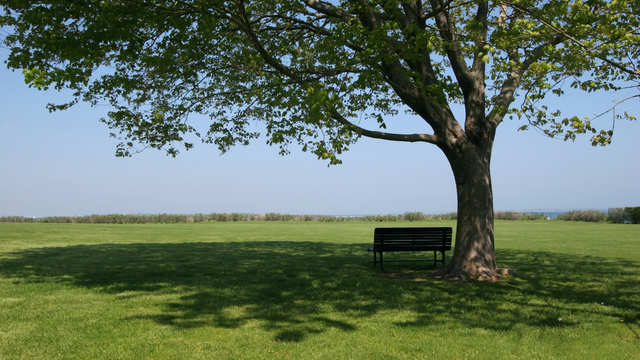“Someone is sitting in the shade today because someone planted a tree a long time ago.”
Warren Buffett
Traditional Queenslander homes were designed and built with the beating sun in mind. Deep verandas surrounded the home to shade and protect the living areas from the unforgiving heat. Just as well too, as the internal timber walls were often paper thin and provided little insulation from the elements. Shade, the fourth topic from a series of articles considering how better design and thoughtful public policy can help to improve the energy efficiency of my 1920s Queenslander home, is a somewhat underestimated building design strategy for keeping our homes cool.
Shading structures
A well-designed and well-located shading feature can reduce the amount of heat entering a home through the windows and doors. My home has five windows along the west-facing external wall, three with window hoods. The existing window hoods are shallow and whilst they do provide some shade, they mostly function to keep out rain. They have also seen better days. There are no west facing doors to consider. The field of passive house design has proven that more energy passes through a window than a solid wall. This is the case for even the best performing modern windows. One option to reduce the heat entering the home is to install windows with high-performance glass. A major barrier to installing high-performance windows is the up-front cost. As anyone who has built or renovated a home will attest, windows are expensive. And even after a considerable financial outlay, direct sun will still be hitting each of the five western windows.
Research has shown the most effective way to reduce the heat entering a home is to intercept the direct radiation from the sun before it reaches the window glass. Installing window hoods with deep eaves and adjustable shades capable of shading all west-facing windows will reduce the impact of hot summer sun and lower the internal temperature of the home. The shading feature must be adjustable, so that any surrounding air is able to move freely to carry away the heat absorbed by the shade. The shading feature could be adjustable timber or aluminium louvres, or external blinds with the ability to roll up or down. If the shading features were fixed structures and not adjustable, the trapped hot air would reduce the effectiveness of the solution.
Some additional benefits of window hoods and eaves are that they reduce unwanted glare, and the window hoods can also be integrated into the home’s water harvesting system. Window hoods can be designed to catch and divert rainwater to strategically located water storage tanks, for garden, laundry, and toilet use. This would reduce the potable water demand for the home and follows the integrated design ethos of a single design feature adding multiple efficiency elements to the home.
Natural shading
Shading for a property can be provided by fixed shading devices such as blinds or sunshades, however a more regenerative solution can be provided using trees or plants. As mentioned above, my home is heated in summer by direct western sun, often making the western side of the home uncomfortable during the late afternoon. Garden space is available to house a medium-sized tree between six and eight metres tall to reduce the impact of this intense summer sun. Deciduous trees are lush and bushy with leaves in summer, providing shade, privacy, and improving the energy efficiency of a building by reducing the need for fans and air-conditioners. Deciduous trees drop all leaves in winter and allow the sun to penetrate the tree canopy and warm the home when it is desired most, reducing the need for electrical or gas heating, and adding to the year-round energy efficiency benefits.
Fallen leaves from deciduous trees provide nourishing mulch for the garden or lawn and can be useful as an additive to a compost bin, where they will continue the circular journey of life when added back into the garden. Leaves falling from deciduous trees can also land on the roof of the home and end up in the roof gutters, potentially blocking water flow and creating a possible bushfire hazard – meaning regular maintenance of the roof gutters is important. Trees absorb carbon dioxide, helping to clean the air we breathe, as well as releasing oxygen. What’s more, medium-sized trees provide a home for any number of insect and bird species, encouraging and increasing biodiversity in the surrounding area, particularly important to an inner-city environment like West End. A lack of biodiversity can easily lead to a lack of interest in and care for nature, so any steps to reverse and avoid this will ensure our cities and towns are flush with plants, trees, and creatures.
The beauty of natural shading is that it is affordable, even if purchasing a mature tree, and could be implemented immediately (although in many cases you will need to allow time for the tree to grow and mature). If you have the patience, growing a tree from seed or propagating from an established tree is well worth the wait. Some level of horticultural knowledge is required, and this can be provided by an experienced nursery horticulturalist when making your purchase. Professional advice can remove any doubts or uncertainties you may have about planting the wrong tree. Selecting a native species is ideal, and an indigenous species is even better – read about the difference here. I’ve talked up deciduous trees in this article, but the best choice will depend on your specific circumstances (and Australia has a distinct lack of native deciduous trees).
My home does have garden space readily available for tree planting, however this may not be the case for all homes. Existing foliage or fixed garden structures may need to be cleared to create the required space for a medium-sized tree. If space is at a premium, more suitable options could be climbing vines or small shrubs.
As the old adage goes, “the best time to plant a tree is 20 years ago. The second-best time is now”.
All images by Shutterstock.
More from Ben here.
Looking for a free, renewable, and healthy natural resource? It’s a breeze




